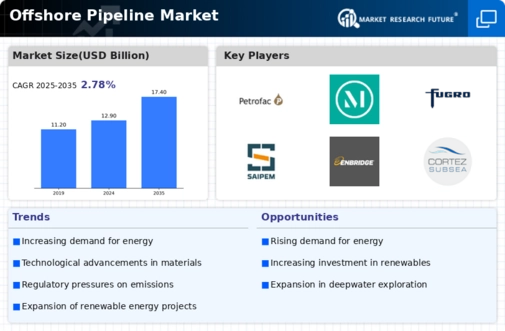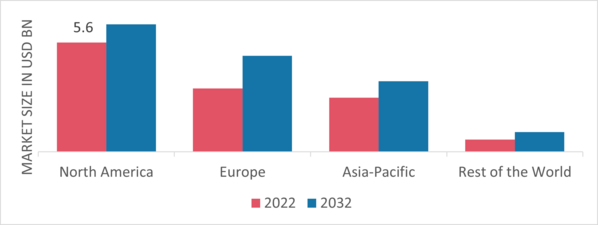Market Trends
Key Emerging Trends in the Offshore Pipeline Market
Impactful developments in the offshore pipeline market reflect the global oil and gas industry and offshore exploration and production needs. The need for flexible and strong pipeline systems for deepwater and ultra-deepwater projects is rising. As offshore exploration enters increasingly hostile settings, pipelines that can tolerate high pressures, corrosion, and complicated seabed topography are needed. To meet deepwater exploration problems, offshore pipelines are being built using advanced materials and methods.
Additionally, subsea tie-back projects are becoming more popular. Underwater pipelines link fresh oil and gas finds to production infrastructure via subsea tie-backs. It decreases project expenses and the requirement for additional independent facilities. Due to the industry's emphasis on cost efficiency and infrastructure optimization, subsea tie-backs enable for the extraction of greater reserves with decreased capital investment.
The offshore pipeline industry is also adopting digital technology and smart pipeline solutions. Digitalization improves offshore pipeline monitoring, maintenance, and efficiency. Smart sensors, real-time data analytics, and predictive maintenance algorithms monitor pipeline integrity, identify faults, and optimize maintenance schedules. This trend supports Industry 4.0, which promotes connection and automation for asset management and performance enhancement.
As the world moves toward greener energy, offshore pipeline projects are adding carbon capture and storage (CCS) capabilities. CCS stores carbon dioxide emissions from industrial operations and power plants in seabed geological formations. Transporting collected CO2 from emission sources to storage locations requires offshore pipes. This graph shows the offshore pipeline industry's support for carbon reduction and climate change mitigation.
Exploration and production in growing offshore locations like the Arctic and East Mediterranean are driving offshore pipeline market expansion. New offshore resources in these places need pipelines to transfer hydrocarbons to processing or export terminals. These offshore places need particular pipeline solutions due to extreme climatic conditions, ice forms, and seismic activity. This development shows the offshore pipeline market's flexibility to varied geographic and environmental problems.
Market focus is also rising on pipeline integrity monitoring and inspection. As offshore pipelines age and need dependable long-term operation, operators are investing in improved inspection and maintenance systems. Pipeline inspections use robotics, ROVs, and AUVs to find flaws early and expedite repair. This trend improves offshore pipeline safety and dependability.
Geopolitics and international cooperation on transboundary offshore projects affect the offshore pipeline business. Sharing offshore resources like oil and gas fields across maritime borders requires cooperation between adjacent governments. Cross-border pipelines and international agreements are needed to harness these resources efficiently and fairly. This chart shows how diplomatic and regulatory frameworks shape the worldwide offshore pipeline business.
In conclusion, the offshore pipeline market is changing due to the demand for advanced solutions in deepwater environments, the trend toward subsea tie-back projects for cost efficiency, the integration of digital technologies for smart pipeline management, the incorporation of carbon capture and storage, exploration in emerging offshore regions, pipeline integrity management, and international collaboration. These developments demonstrate the offshore pipeline industry's durability and agility in addressing global energy requirements and promoting sustainable and efficient offshore exploration and production.










Leave a Comment